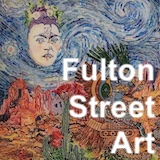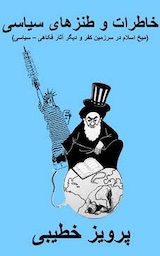Cartoon by Christo Komarnitski
The ‘yellow vest’ protests in France aren’t limited to Paris — they’re tapping into deep anxiety nationwide
The Los Angeles -- Over the weekend, international attention was drawn to the streets of Paris, where thousands of marchers clashed with police and fires burned for hours in one of the biggest challenges yet to President Emmanuel Macron.
Yet Paris remains just part of a much broader story. Some of the greatest anger against a planned diesel fuel tax increase has come from the French provinces, where Macron is seen as an urbanite who favors the rich and lacks understanding of rural France.
France’s interior minister estimated that 136,000 people had marched or taken part in protests across the country over the weekend. In the southwestern city of Toulouse, the protests left 57 injured, including 48 police officers. Further east along France’s coast, a driver was killed in the town of Arles after his van hit a barrier put in place by protesters. In Narbonne, demonstrators set fire to a toll booth.
The Gilets Jaunes, or Yellow Vests, movement, in which protesters wear bright yellow vests, started initially as a reaction to the planned tax on diesel fuel set to take effect in January as part of the French president's efforts to fight climate change.
The Gilets Jaunes, or Yellow Vests, movement, in which protesters wear bright yellow vests, started initially as a reaction to the planned tax on diesel fuel set to take effect in January as part of the French president's efforts to fight climate change. (Pascal Pavani / AFP/Getty Images)
Even in Paris, prosecutor Remy Heitz said that most of the 378 people arrested over the weekend had come from provinces outside the capital.
The Gilets Jaunes, or Yellow Vests, movement, in which protesters wear the bright vests that drivers are required to keep in their cars at all times, started initially as a reaction to the planned tax on diesel fuel set to take effect in January as part of Macron’s efforts to fight climate change.
Rural residents who are more dependent on their cars for work and daily life say the tax will fall disproportionately on their backs. But the movement also tapped into a broader anxiety bubbling across regions of the country far from Paris. And given the deep-seated, underlying issues, simply addressing the gas tax no longer seems like it will be enough to resolve the tension.
Facing the gravest crisis of his 18-month presidency, Macron returned Sunday from the Group of 20 economic summit in Argentina, toured the damage, and asked his prime minister to hold a series of emergency meetings with leaders of all the other major political parties and representatives of the Yellow Vests movement, which has no formal organization.
On Monday, there was no sense of any return to normalcy. Vinci, a private company that contracts to manage many of France’s highways in the southern part of the country, was still publishing a long list of blockages throughout its networks that included at least 70 protest sites, some of which cut off access to major roads. Meanwhile, even some high school students staged walkouts in sympathy.
The uprising has proved confounding because it was not organized by a recognized group. While the French are accustomed to strikes, typically they are called by a major union or political party, and then there is often plenty of warning. When French railway employees went on strike for three months last summer, they published a calendar of strike dates so travelers could plan accordingly.
In contrast, the Yellow Vests’ protest has felt more like an uprising, even as some unions have issued words of support and solidarity, adding to the sense of uncertainty and foreboding. Yet signs of the rupture have been there for years.
According to statistics from INSEE, the government’s statistics and research wing, about 60% of French residents now live in big cities that comprise 7% of the nation’s land. In contrast, rural France covers 70% of the territory, but only has 23% of the population, a percentage that continues to decline. The rest live in some range of extended suburbs.
For those in the countryside, the numbers of stores, post offices, doctors and jobs continue to slide, leaving people even more dependent on their vehicles, according to INSEE.
To some degree, the anger that has bubbled up in recent weeks reflects tension in a country where culture, politics and the economy are highly centralized in Paris. The rural-urban divide has become even wider over the last decade, as evidenced in the most recent presidential election. Macron won the second round of voting with 66%, but much of the 34% received by far-right National Front candidate Marine Le Pen came from hard-hit rural areas.
A landslide for his party in the legislative elections emboldened Macron to push through work and tax reforms at breakneck speed >>>










Comments